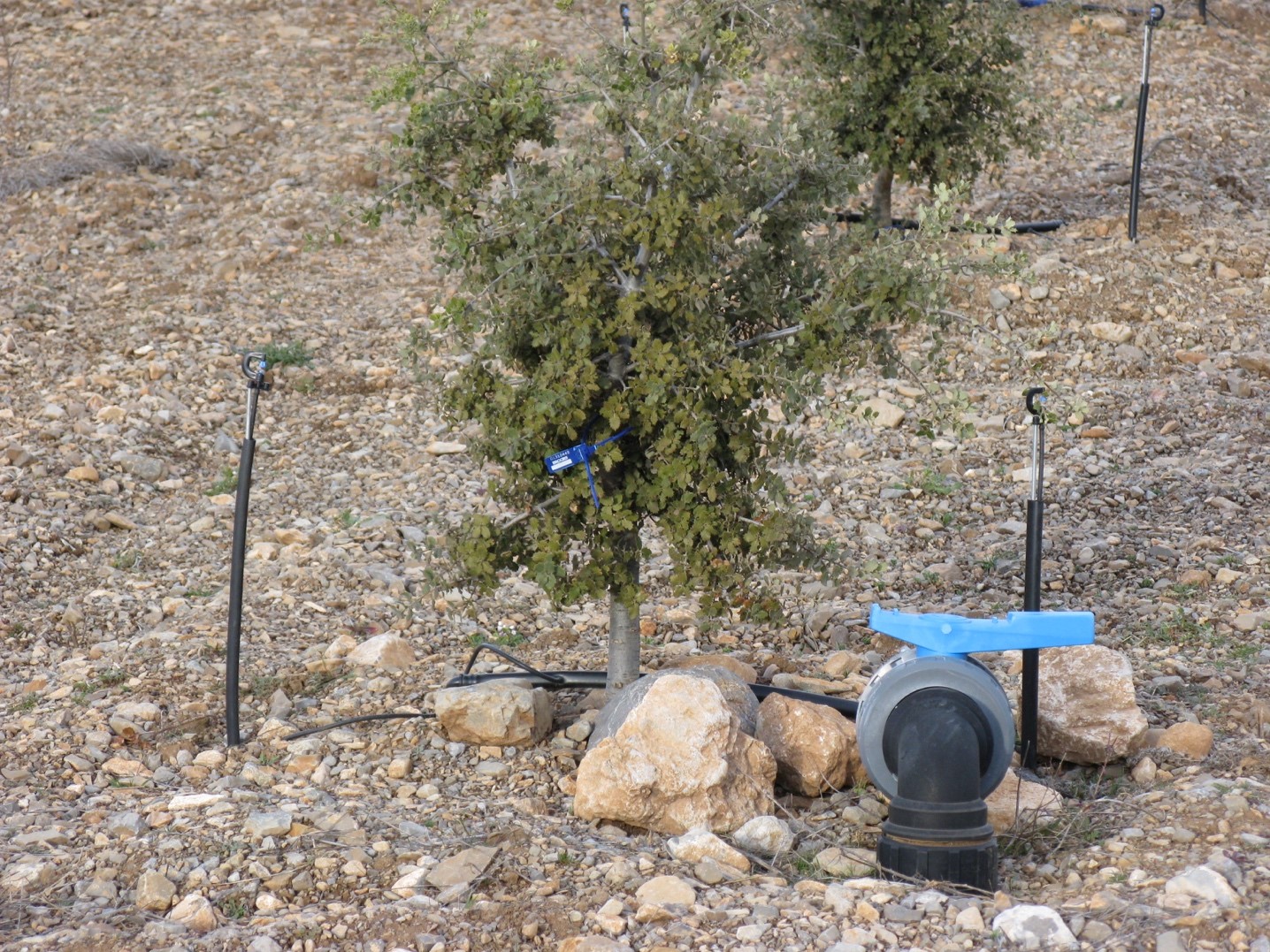
Tuber melanosporum, the fungus that produces the priced Black Truffle, is adapted to Mediterranean droughts. Usually the production of truffles increases in years with higher precipitation. This hinted early farmers into watering the orchards to obtain better crops, but, what happens if we water too much? One of the reasons we do not find truffles in forests with abundant rains could be that in wetter conditions other fungi can outcompete T. melanosporum and displace it from the roots of the trees causing the disappearance of the fungus and the end to truffle production.
Farmers know that they cannot rely on natural precipitation to obtain good crops of truffles, but they do not know how much water they need to irrigate their plantations to have high truffle productions but not lose the fungus that produces them. The fact that the amount of water and the time it is delivered is critical for the orchards made it important to conduct the necessary research.
The results of our studies reveal the irrigation needs of truffle plantations, both during the establishment phase -from planting to production onset- and when the orchard is in production.
Establishment phase:
The maximum proliferation of T. melanosporum mycorrhizas occur when the orchard receives an amount of water equivalent to 50% of the evapotranspiration. Also this irrigation must be applied only from May to June (in Northern hemisphere). Or, more specifically, formation of mycorrhizas after planting is best if the water potential is managed to be allowed to drop to -1.5 MPa (Megapascals), and then brought up to -0.4 MPa.
Production phase:
Production is highest when the Water Potential does not drop below -1 MPa.
Establishment phase:
Water with an amount of water equivalent to approximately 50% of the evapotranspiration from May to June (in the Northern hemisphere). Or, more specifically, if the water potential (WP) drops below -1.5 MPa, the orchard should be irrigated to bring the WP back up to -0.4 MPa but not above.
Production phase:
The WP should not drop below -1 MPa. If the water potential reaches -1MPa, water to bring it up to 0 MPa mimicking a copious summer thunderstorm and then do not water again until it reaches -1MPa. The plantations should be irrigated with sprinklers that simulate rain avoiding the warmer hours of the day.
Impact. Truffle production annual variation is a problem for the truffle sector as a whole when truffle production depends on natural rains. Irrigated orchards provide a steady supply of truffles that allow for long term planning across the supply chain form farmers to restaurants or event organizers.
Weakness: The studies on the effects of irrigation on truffle productions are still scarce and completely lacking when it comes to long term effects.
The next challenge is to establish long term irrigation studies in different types of orchards and in different production zones around the world to be able to provide farmers with irrigation protocols best suited to their farms.
Irrigation needs vary a lot with soil types and elevation/latitude, and is expected to also vary with the tree species used as host for T. melanosporum.
Carlos Colinas, carlos.colinas@udl.cat
Christine Fischer, christine.fischer@ctfc.es
Daniel Oliach daniel.oliach@ctfc.es
José Antonio Bonet, jantonio.bonet@udl.cat
Further information
Olivera A, Bonet JA, Oliach D, Colinas C (2014) Time and dose of irrigation impact Tuber melanosporum ectomycorrhiza proliferation and growth of Quercus ilex seedling hosts in young black truffle orchards. Mycorrhiza 24:73–78. doi: 10.1007/s00572-013-0545-4
Olivera A, Fischer CR, Bonet JA, de Aragón JM, Oliach D, Colinas C (2011) Weed management and irrigation are key treatments in emerging black truffle (Tuber melanosporum) cultivation. New For. doi: 10.1007/s11056-011-9249-9
Olivera A, Martínez de Aragón J, Fischer C, Oliach D, Bonet J, Colinas C (2006) Are black truffle systems under risk of recession due to a warning climate? 5th International Conference On Mycorrhizae (ICOM 5). Granada, Spain
Carlos Colinas

Young truffle orchard with irrigation system installed. Source: Carlos Colinas
